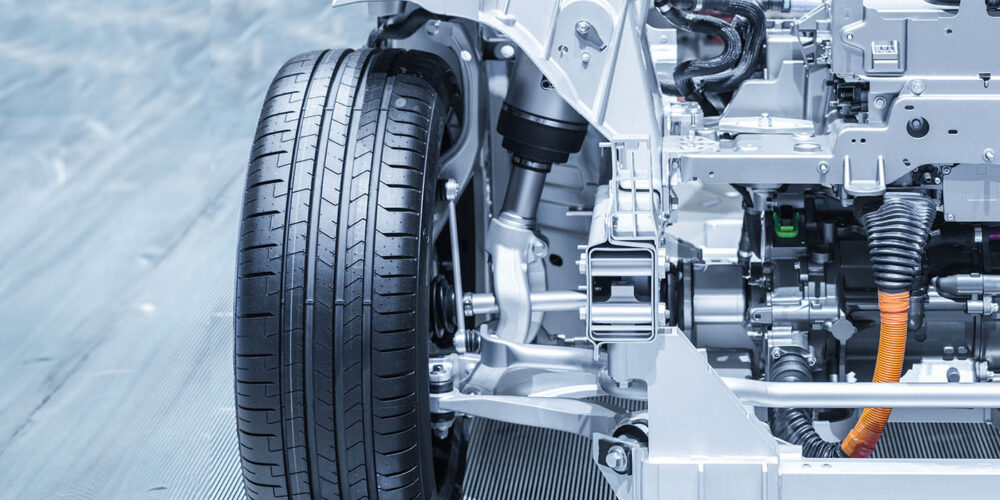Ride Control For Electric Vehicles
Replacement units are available from sources other than the dealer.
EVs are not immune to potholes, curbs and rough roads. Just like every internal combustion vehicle on the roads, the shocks, struts and springs will eventually degrade to the point where they can no longer control the movement of the suspension.
Most EVs have a weight problem that works to your advantage. The weight of the battery and motor can make some EVs 1,000-3,000 pounds heavier than their internal combustion counterparts. This will cause extra stress on the suspension.
Brake Pad Edge Codes
The “Edge Code” can tell you information about a brake pad’s friction material.

Chassis Parts and Alignment Angles
Knowing why the adjustment is required is critical to performing the total alignment.

Suspension Upgrades – Selling Shocks and Struts
The question customers fail to ask is, what is “best” for their vehicle?

Air Ride Suspension Diagnostics
The key to understanding the logic of air ride systems is using service information.

Other Posts
Steering Angle Sensor Operations
It is important for the ABS/ESC module to receive two signals to verify the steering wheel’s position.

Chassis Alignment
The source of the complaint can be the angles, electronics or tires.

Laying Out Your Shop for ADAS/EV Repairs
With so many vehicles equipped with some form of ADAS, rethinking your electronics layout or plan might be in order.

Broken Springs
What is the cause for the failure? Why does it occur with specific vehicles?






